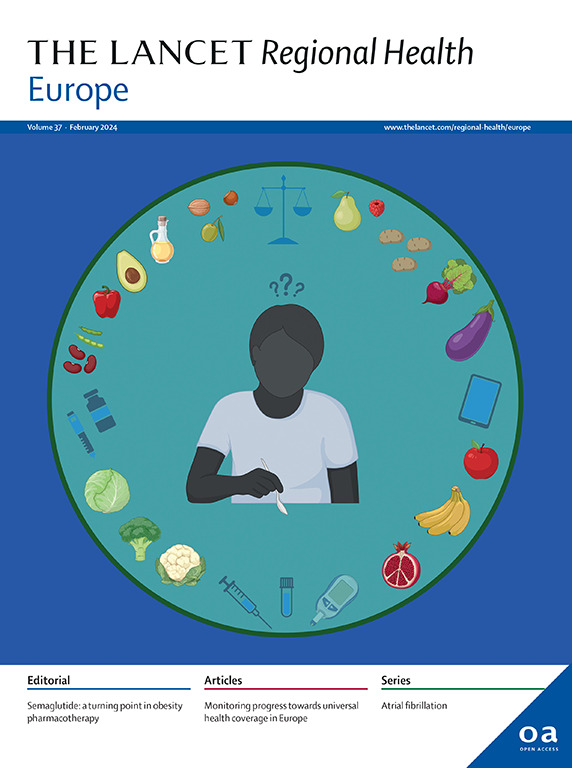在英格兰控制未来m痘暴发的疫苗接种策略的成本效益:一项模型研究
IF 13
Q1 HEALTH CARE SCIENCES & SERVICES
引用次数: 0
摘要
2022年,全球男同性恋和双性恋男性(GBMSM)中发生了麻疹疫情。在英格兰,通过减少性危险行为和对高风险的同性性行为接触者进行疫苗接种,疫情得到了控制。然而,麻疹继续传播,包括在非洲扩大疫情。我们评估了最具成本效益的疫苗接种策略,以尽量减少英格兰GBMSM中未来的m痘暴发。方法建立了GBMSM中m痘传播的数学模型,以估计从2024年开始(10年时间范围;3.5%贴现率;支付意愿门槛£20,000/QALY)。针对高危GBMSM的反应性疫苗接种(仅在疫情期间)和/或预防性疫苗接种(持续常规)策略与未接种疫苗进行了比较。基线预测假设输入了新的mpox病例,并且在每剂160英镑的情况下,1/2剂疫苗的有效性为78%/89%,持续5/10年。估计了疫情期间病例管理、疫苗接种和公共卫生应对的费用。与不接种疫苗相比,所有疫苗接种策略都减少了未来的疫情,获得了质量质量年,并降低了成本。如果爆发疫情,持续的预防性疫苗接种(每日54剂)和反应性疫苗接种(每日81剂)是最具成本效益的,可节省880万英镑,并在10年内获得108.6个质量年。如果疫苗成本低于330英镑/剂,则疫苗接种仍具有成本效益。在许多敏感性分析中,先发制人的反应性疫苗接种仍然是首选策略,而在一些敏感性分析中,更高比例的先发制人疫苗接种成为首选策略。只有在不包括公共卫生应对成本的情况下,反应性疫苗接种才成为首选策略,在这种情况下,疫苗每剂的成本必须低于110英镑,才能具有成本效益。对高风险的GBMSM进行疫苗接种可能是预防未来m痘暴发的一种节省成本的策略。资助国家卫生研究院和惠康信托基金。本文章由计算机程序翻译,如有差异,请以英文原文为准。
Cost-effectiveness of vaccination strategies to control future mpox outbreaks in England: a modelling study
Background
In 2022, a global mpox outbreak occurred among gay and bisexual men who have sex with men (GBMSM). In England, the outbreak was controlled through reductions in sexual risk behaviour and vaccination of high-risk GBMSM. However, mpox continues to circulate, including an expanding outbreak in Africa. We evaluated the most cost-effective vaccination strategy to minimise future mpox outbreaks among GBMSM in England.
Methods
A mathematical model of mpox transmission among GBMSM was developed to estimate the costs per quality-adjusted-life-year (QALY) gained for different vaccination strategies starting in 2024 (10-year time-horizon; 3.5% discount rate; willingness-to-pay threshold £20,000/QALY). Reactive vaccination (only during outbreaks) and/or pre-emptive vaccination (continuous routine) strategies targeting high-risk GBMSM were compared to no vaccination. Baseline projections assumed importation of new mpox cases, and a vaccine effectiveness following 1/2 doses of 78%/89% for 5/10 years at £160/dose. Costs were estimated for case management, vaccination and public health responses during an outbreak.
Findings
All vaccination strategies reduced future outbreaks, gained QALYs and reduced costs compared to no vaccination. Continuous pre-emptive vaccination (daily rate 54 doses) with reactive vaccination (daily rate 81 doses) if there is an outbreak was most cost-effective, saving £8.8 million and gaining 108.6 QALYs over 10-years. Vaccination remains cost-effective if the vaccine costs less than £330/dose. Pre-emptive with reactive vaccination remains the preferred strategy across many sensitivity analyses, with just pre-emptive vaccination at a higher rate becoming the preferred strategy in some sensitivity analyses. Just reactive vaccination only becomes the preferred strategy when public health response costs are not included, and in this case the vaccine has to cost less than £110 per dose for vaccination to be cost-effective.
Interpretation
Vaccination of high-risk GBMSM is likely to be a cost-saving strategy for preventing future mpox outbreaks.
Funding
NIHR and Wellcome Trust.
求助全文
通过发布文献求助,成功后即可免费获取论文全文。
去求助
来源期刊

Lancet Regional Health-Europe
Multiple-
CiteScore
19.90
自引率
1.40%
发文量
260
审稿时长
9 weeks
期刊介绍:
The Lancet Regional Health – Europe, a gold open access journal, is part of The Lancet's global effort to promote healthcare quality and accessibility worldwide. It focuses on advancing clinical practice and health policy in the European region to enhance health outcomes. The journal publishes high-quality original research advocating changes in clinical practice and health policy. It also includes reviews, commentaries, and opinion pieces on regional health topics, such as infection and disease prevention, healthy aging, and reducing health disparities.
 求助内容:
求助内容: 应助结果提醒方式:
应助结果提醒方式:


